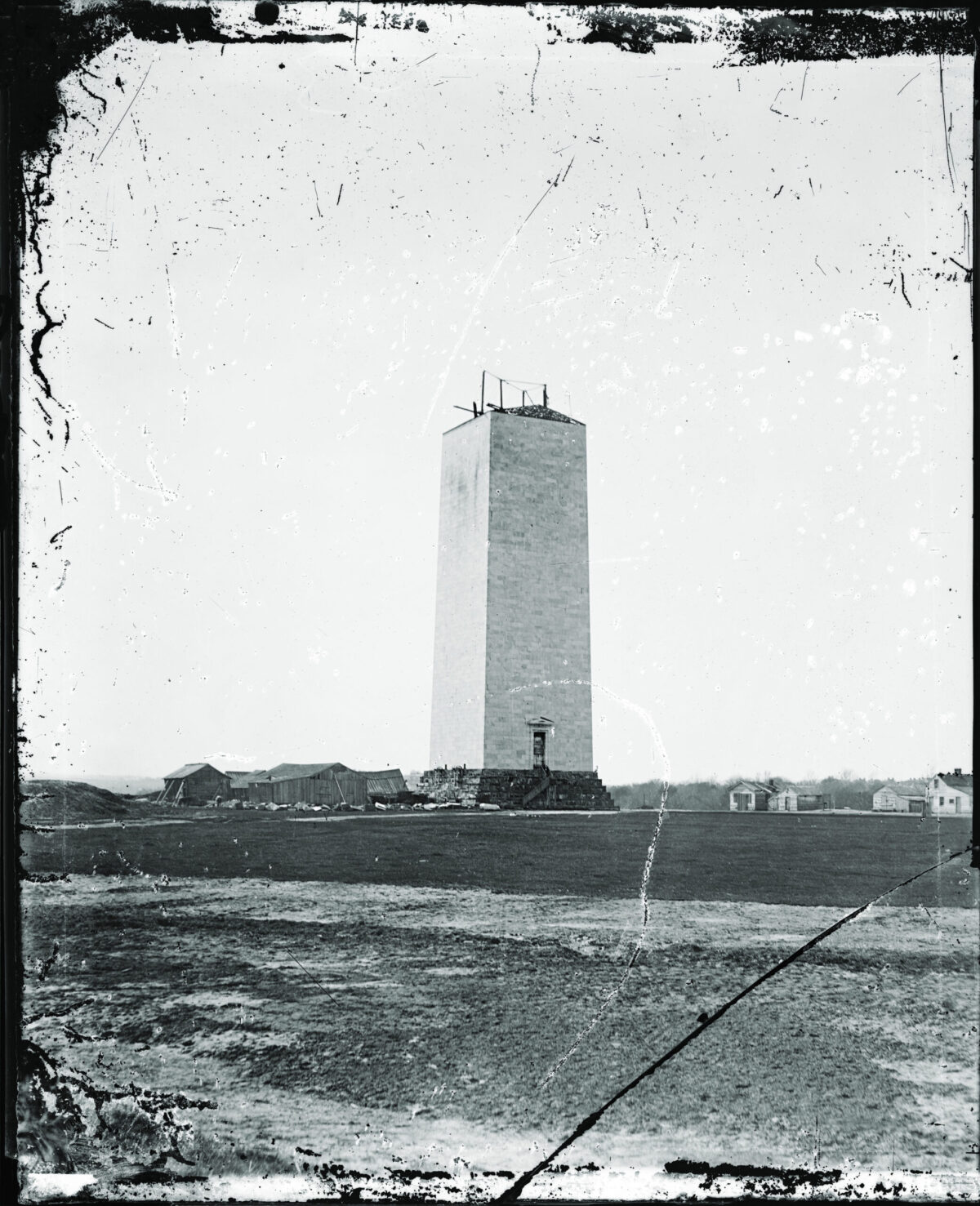For the duration of the Civil War, the Washington Monument looked like this, only partially completed. Legendary D.C. photographer Mathew Brady captured this image of the Washington Monument around 1860, but no progress had been made in construction since 1854, when the monument’s private funding society went bankrupt. Though an impressive 156 feet high, construction only became more difficult and costly as the obelisk ascended, and architect Robert Mills’ 600 foot design seemed an impossibility.
Fundraising dried up in the 1850s as the anti-Catholic conspiracy theorists of the Know Nothing party took over the project, adding controversy to an already troubled project. With the architect’s death in 1855, disagreements mounted even about the fundamental design, and whether the obelisk should be ornamented, decorated, engraved, or left plain. Though hardly the most vitriolic political debate at the time, the halted project didn’t do anything to help a nation divided, and such a monument to failure in the heart of the nation’s capital was a constant embarrassment throughout the ongoing Civil War.
Finally, in 1876, Congress decided to do something about the national eye-sore, and funded its completion. Now in the hands of the Army Corps of Engineers, progress was steady, if troubled. For one, the Baltimore quarry used for the monument’s stone had closed. Though the Army matched the original stone as best it could from other quarries, differences in color are obvious in the completed monument. The foundation was also found to be unsuitable for the monument’s height, requiring both a reconstruction, and the use of thinner blocks nearer the top of the monument.
Eventually, though, aided by cutting-edge steam-powered elevators, the Corps of Engineers finished construction in 1884. At 555 feet (and 5.125 inches), it didn’t quite match the original goal, but it still held the record for the largest building in the world until construction of the Eiffel Tower in 1889. Today, 140 years after its dedication, it still dominates the skyline as the tallest building in height-restricted Washington, D.C. — if you don’t count TV and radio towers.

